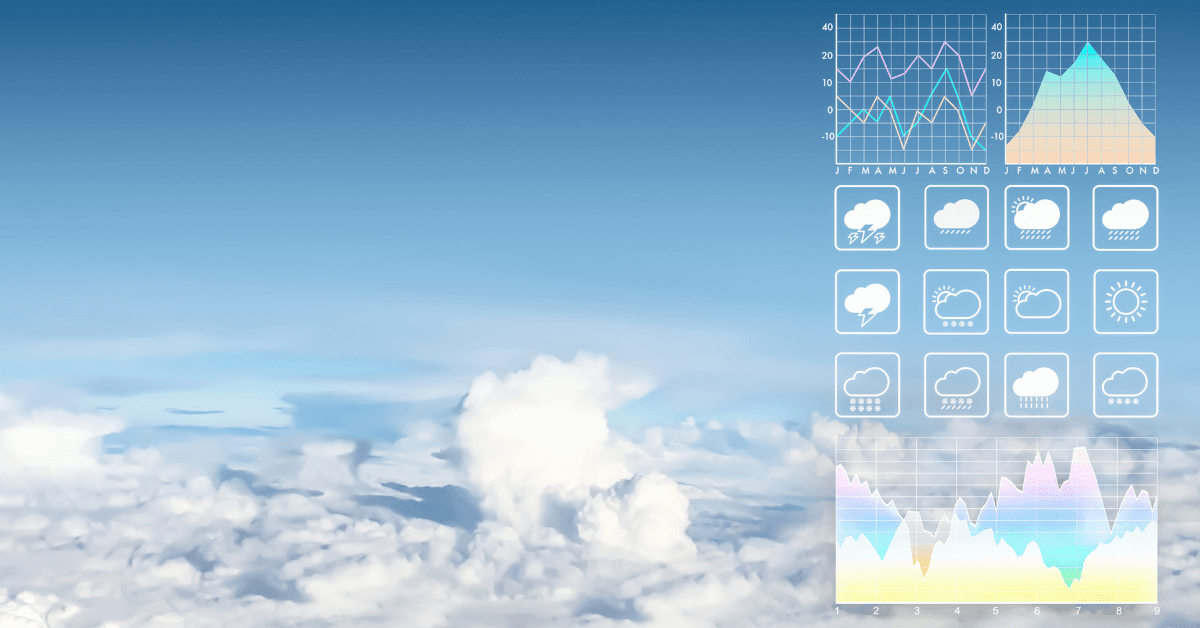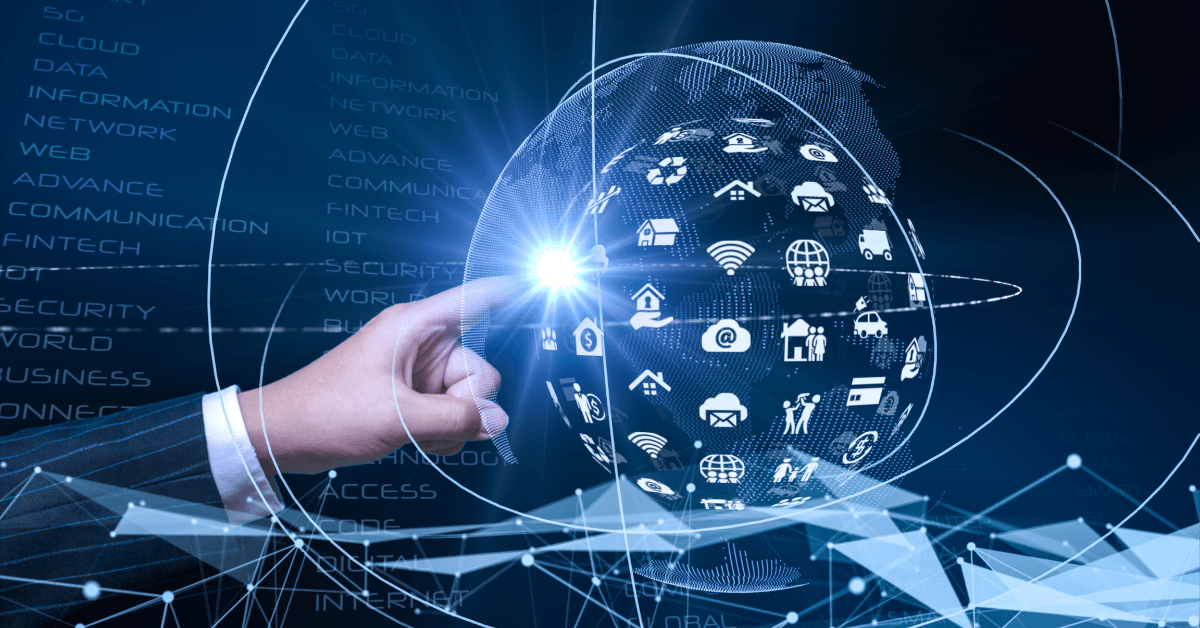Artificial Intelligence in Weather Forecasting: Transforming Weather Prediction
An essential component of human planning has always been weather forecasting. Accurate forecasts save lives and resources in various fields, including agriculture and disaster management. Artificial intelligence (AI), which offers previously unheard-of speed and precision, is revolutionizing this industry today. This blog will examine how artificial intelligence (AI) is changing weather forecasting, as well as its state-of-the-art methods, practical uses, and prospects.
1. How AI Changes Conventional Forecasting Techniques
In the past, meteorologists used satellite data and models based on physics to forecast the weather. Despite their effectiveness, these approaches frequently suffered from data complexity and computing limitations. AI comes into play. Large datasets, ranging from wind patterns to temperature trends, may now be analyzed in a matter of seconds by machine learning algorithms.
AI systems, for instance, can interpret radar pictures more quickly than human specialists. They quickly determine the severity of rainfall or storm forms. Forecasters are thus given more time to provide warnings. AI also increases accuracy by learning from previous mistakes. Neural networks adjust constantly, improving predictions as fresh data comes in, in contrast to static models.

2. Machine Learning: The Process That Makes Predictions Smarter
The foundation of AI-powered weather products is machine learning (ML). After being trained on decades’ worth of historical weather data, supervised learning algorithms are now able to identify trends that conventional methods would have missed. For example, machine learning systems use satellite images to forecast storm trajectories and strength changes.
In the meanwhile, related weather occurrences are clustered via unsupervised learning. This method makes it easier to spot irregularities like unexpected frosts or abrupt heat waves. Reinforcement learning enhances this process. These models optimize prediction tactics through the simulation of innumerable weather situations. Forecasts become quicker and more accurate as a consequence.
3. Deep Learning and Neural Networks: Copying Human Understanding
A kind of machine learning called deep learning simulates human decision-making by using multilayer neural networks. These networks are particularly adept at handling unstructured data, such as 3D atmospheric profiles or movies of cloud movement. For example, Google’s MetNet-2 forecasts rainfall with a 1 km resolution eight hours in advance.
Comparably, FourCastNet from NVIDIA models global weather patterns at a rate that is 45,000 times quicker than that of traditional systems. By using petabytes of climate data for training, these networks uncover hidden linkages. As a result, they perform better in short-term projections than physics-based models.
4. Case Studies: Artificial Intelligence in Action During Hurricane Tracking and Severe Weather-AI in Weather Forecasting
Penn State researchers employed artificial intelligence in 2022 to forecast Hurricane Ian’s arrival. Their model integrated wind shear measurements with ocean temperature data. The outcome? A 15% increase in tracking accuracy over conventional techniques.
Assessment of Wildfire Risk
AI techniques like IBM’s PAIRS are currently used in fire-prone areas of California. These devices measure wind speeds, vegetation dryness, and soil moisture. Risk maps are sent to firefighters days in advance of breakouts, allowing for preemptive control.
Forecast for Floods
Google’s Flood Hub uses artificial intelligence to predict floods in Bangladesh seven days ahead of time. Rainfall patterns and river level data are processed by the platform. Villagers now leave sooner, which results in a 35% decrease in casualties.

5. Overcoming Obstacles: Model Bias and Data Quality
Despite its potential, AI has challenges. First, the quality of the data is important. Here, it’s garbage in, rubbish out. Predictions may be distorted by missing satellite feeds or inconsistent sensor data. Generative adversarial networks (GANs) are currently used by developers to counteract this. To fill in the gaps, these AI systems generate fake data.
Second, model bias is still an issue. Algorithms trained on area data may malfunction due to unfamiliar temperatures. A model designed for European winters, for instance, might not accurately forecast Southeast Asian monsoons. To combat this, researchers use transfer learning and diversify training datasets.
6. The function of IoT integration and edge computing-AI in Weather Forecasting
Combining edge computing and the Internet of Things (IoT) with AI increases its potential. AI-enabled smart weather stations locally process data. This lowers latency, which is important for tsunami or tornado warnings.
Additionally, IoT devices like buoys and drones gather hyper-local data. Real-time AI analysis of this data provides projections at the street level. Imagine being able to predict when it will rain in your neighborhood. Both commuters and municipal planners benefit from such accuracy.
7. Modeling Climate Change: The Long-Term Effects of AI
Climate change necessitates long-range, worldwide forecasts. AI excels in this situation. Carbon emission scenarios are simulated over decades by systems such as Microsoft’s ClimaX. These findings are used by policymakers when creating sustainability plans.
AI also monitors minute changes, such as ocean acidification or glacier melting. Governments can mitigate the impact of disasters by anticipating critical points. Additionally, crop resilience projections from businesses like ClimateAI assist farmers in adjusting to unpredictable weather.
8. Ethical Issues: Who Makes the Prediction?
As AI takes over meteorological technology, moral dilemmas emerge. Who owns the weather data? Should life-saving forecasts be in the hands of private companies? Regulations requiring open-access AI models for public safety were suggested by the EU in 2023.
Openness is also important. Black-box AI systems damage confidence because they cannot justify their forecasts. There are emerging solutions, such as explicable AI (XAI). By dissecting decision-making processes, these technologies enable meteorologists to verify results.

9. Upcoming Developments: Customized Predictions and Quantum Computing-AI in Weather Forecasting
The future frontier combines AI and quantum computing. The atmospheric equations might be solved by quantum algorithms in a matter of minutes rather than weeks. Quantum-enhanced storm tracking models are already being tested by Lockheed Martin.
Meanwhile, we are in the process of developing custom weather applications. Imagine AI adjusting projections based on your health requirements, such as allergy sufferers receiving pollen alerts. These developments will increase the public’s dependence on AI-powered weather forecasts.
10. How to Keep Up in This Quickly Changing Field
Keep up with top research centers such as the European Centre for Medium-Range Weather Forecasts or NOAA’s AI Lab. Attend seminars hosted by tech behemoths like Google and IBM. Sign up for publications such as Artificial Intelligence for Earth Systems.
Try out some open-source tools. Weather prediction tutorials are available on platforms such as PyTorch and TensorFlow. By getting hands-on, you can directly experience the transformative impact of AI.
Conclusion: Using AI to Create a World That ‘s Weather-Ready
AI is transforming weather forecasting, not simply improving it. The advantages are numerous, ranging from preventing climate change to saving lives during emergencies. However, issues like ethics and data bias must be addressed.
Keep your curiosity alive. The use of AI in meteorology will evolve as technology advances. We invite you to participate in the discussion and kindly bookmark this blog for future updates. We’ll work together to use AI to create a better, safer future.
FAQ:
How can AI be used for weather forecasting?
- AI immediately evaluates climate models, radar photos, and satellite data. By identifying hidden patterns, machine learning enhances storm forecasting. Furthermore, AI provides quicker, hyper-local flood or heatwave forecasts by processing real-time information.
How can AI be used in forecasting?
- Data processing from sensors, drones, and satellites is automated by AI. Neural networks forecast patterns such as droughts or rains. At the same time, it helps with disaster preparedness and agriculture by improving accuracy via learning from prior mistakes.
Can Generative AI predict weather?
- Indeed! Using historical data, generative AI models various weather conditions. For example, it simulates heat waves or storm routes. Additionally, it closes data gaps by producing artificial datasets for reliable forecasting system training.
What is AI forecasting?
- AI forecasting predicts weather occurrences by using machine learning. In contrast to conventional techniques, it provides real-time updates, recognizes nonlinear patterns, and learns from large datasets. In essence, it combines meteorology with data science.
How will AI change weather forecasting?
- AI improves scalability, speed, and accuracy. It makes minute-by-minute changes possible, such as forecasting rain in certain neighborhoods. Furthermore, sophisticated climate models may soon be solved by quantum-AI hybrids, which would transform long-term projections.



